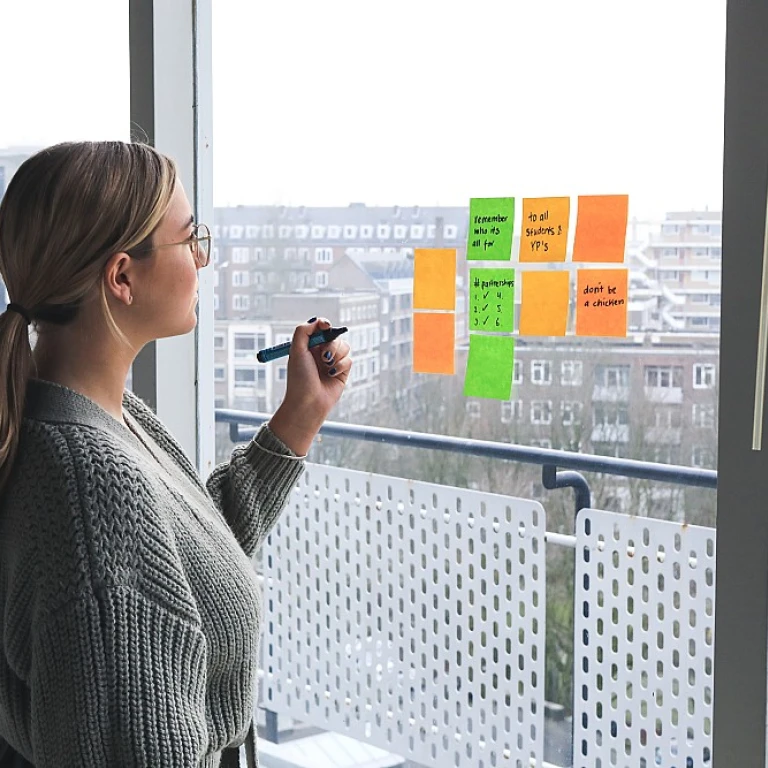Understanding Digital Employee Experience
Grasping the Essence of Digital Interaction for Employees
In today's rapidly evolving work environment, understanding the digital interaction that employees experience is pivotal. As organizations continuously integrate digital tools and platforms into their daily operations, it's crucial to comprehend what digital employee experience, often abbreviated as DEX, truly entails.
At its core, digital employee experience is about how technology impacts employees' day-to-day work life. From communications to task management, digital platforms shape the way employees engage with their tasks and teams. It's not just about the software or hardware; it involves the entire ecosystem that influences how employees perform, collaborate, and innovate.
A successful DEX implementation leads to streamlined operations and a more engaged workforce. Yet, to ensure its effectiveness, companies must consider the role of employee feedback in shaping this experience. Employees are the primary users of these digital systems; gathering their insights allows for continuous improvement, creating a more tailored experience that meets their needs.
Embracing the right technology can significantly elevate productivity, but it's essential to address potential workplace issues that might arise. Challenges such as over-reliance on technology, digital fatigue, and security concerns must be addressed to enhance the digital journey. Moreover, positive DEX has a profound impact on employee satisfaction and engagement, directly influencing organizational success.
As we look towards the future, emerging trends like AI integration and enhanced virtual collaboration tools will define the next phase of digital employee experience. These advancements promise not only to augment productivity but also to reshape workplace interactions in ways we are only beginning to understand.
The Role of Feedback in Enhancing DEX
The Power of Constructive Feedback
In the evolving landscape of the digital work environment, feedback plays a pivotal role in shaping the employee experience. Feedback is not just a tool for addressing performance issues; it is a cornerstone for growth and development. By fostering an open feedback culture, organizations can enhance the digital experience for their employees, leading to increased engagement and satisfaction.
Feedback allows employees to voice their concerns and share their experiences, which can lead to meaningful changes in the digital tools and processes they use daily. When employees feel heard, they are more likely to be invested in their work, contributing to a more dynamic and productive workplace.
Moreover, feedback should be a two-way street. While it is essential for employees to receive constructive input from their managers, it is equally important for organizations to solicit feedback from their workforce. This approach not only helps in identifying areas for improvement but also empowers employees by making them active participants in shaping their work environment.
Incorporating regular feedback sessions can significantly enhance the digital employee experience by addressing pain points and optimizing workflows. This proactive approach can prevent small issues from escalating into larger problems, ultimately fostering a more harmonious and efficient workplace.
Elevating Efficiency Through Digital Tools
In recent conversations surrounding employee experience, the emphasis on leveraging digital tools and technologies has become paramount. The digital landscape today provides a plethora of platforms, applications, and sophisticated technologies designed to make the work environment more seamless and efficient. With the rapid advancements in AI, machine learning, and cloud computing, optimizing workplace productivity is now more achievable than ever.
Organizations are increasingly adopting various technologies to streamline workflows and enable employees to perform at their best. Integrated collaboration platforms, such as Microsoft Teams or Slack, facilitate seamless communication, even in remote setups, by offering instant messaging, video conferencing, and file sharing all within a single interface. This integration is particularly significant for remote work environments, as highlighted by discussions on enhancing employee experience in remote work
here.
Moreover, task management and project tracking tools like Asana and Trello empower employees to manage their responsibilities effectively, fostering a culture of accountability and transparency. With real-time updates and sharing capabilities, these tools ensure team members remain aligned with their objectives, regardless of their physical location.
Personalization is yet another game-changer in the digital employee experience. Platforms that utilize data-driven insights to offer personalized content and task recommendations can significantly enhance employee engagement and productivity. By tailoring content to meet individual preferences and needs, these tools help employees find information and resources more efficiently, reducing time wastage and frustration.
Ultimately, integrating the right digital tools and technologies is crucial for elevating employee productivity and satisfaction. As technology continues to evolve, staying updated with these innovations and implementing them effectively could be the key to unlocking new levels of employee success and fulfillment.
Addressing Common Workplace Issues with DEX
Traditional Challenges of the Workplace
In any workplace, whether it's a bustling city office or a cozy remote setup, challenges are inevitable. However, the digital experience has introduced a new perspective in addressing these age-old issues. At the heart of the digital employee experience is the idea that technology should simplify processes, streamline operations, and ultimately create a conducive work environment.
One of the most common challenges is effective communication. Many companies struggle with ensuring clear and consistent communication across all levels. By leveraging digital platforms, organizations can foster seamless interactions and collaborations, eliminating misunderstandings and promoting transparency.
Transforming Communication with DEX
The power of digital employee experience lies in its ability to transform communication channels. Modern technology offers tools like video conferencing, chat platforms, and project management applications that promote real-time engagement and feedback. This enhances not only the quality of communication but also speeds up decision-making processes.
Integrating feedback mechanisms, as discussed earlier, into these tools allows employees to voice concerns and suggestions promptly, ensuring that any issues are addressed before they escalate.
Cultivating a Positive Workplace Culture
Workplace culture is another area where the digital experience can significantly contribute. By embracing technology, organizations can encourage a culture of continuous learning and innovation. Online training platforms, webinars, and digital courses empower employees to expand their skill sets and stay updated with industry trends.
Moreover, DEX platforms enable the creation of virtual communities where employees can connect and share ideas, thus enhancing collaboration and fostering a sense of belonging. By addressing concerns such as isolation in remote setups, companies can ensure that their workforce remains motivated and engaged.
Improving Work-Life Balance
Finally, a crucial yet often overlooked aspect of workplace challenges is achieving a healthy work-life balance. Digital employee experience solutions help by providing flexibility in how and where employees work. Through cloud-based solutions and remote access to necessary tools, employees can maintain productivity without the constraints of a physical workspace.
As the digital journey continues to evolve, understanding its role in tackling these challenges will be vital for businesses aiming to enhance employee satisfaction and retain top talent. This holistic approach not only enhances productivity but also plays a critical role in nurturing an engaged and satisfied workforce.
The Impact of DEX on Employee Satisfaction and Engagement
Empowering Employee Satisfaction through Digital Means
In our exploration of elevating the digital experience for employees, it's clear that a well-crafted digital environment goes a long way in not only fostering productivity but also in fortifying employee satisfaction and engagement. The importance of a satisfying digital workspace cannot be overstated as it directly impacts how employees feel about their work environment, influencing their overall happiness and enthusiasm towards their roles.
A seamless digital employee experience (DEX) translates to employees having better access to tools and resources, thus enabling them to perform tasks more efficiently. This efficiency can lead to a sense of achievement and competence, which are key components of job satisfaction. Moreover, when employees feel supported by their digital tools, they are more motivated to engage with their work and peers, positively impacting the company culture as a whole.
Beyond the practical aspects, effective DEX contributes to the emotional well-being of employees. As mentioned in the role of feedback section, an open channel for communication and continuous feedback nurtures trust and transparency, which are important for employee morale and engagement. Employees who feel heard and considered are more likely to be satisfied with their job, thereby investing more positively in their work community.
The collective result of improved satisfaction and engagement can be seen in lowered turnover rates, as contented employees are less likely to seek opportunities elsewhere. Also, when satisfaction levels are high, it can attract top talent, as the company becomes known as a desirable place to work.
In conclusion, enhancing the digital experience is not just about integrating advanced tools and technologies but also about creating a supportive and engaging work atmosphere that drives satisfaction and builds a committed and motivated workforce. Looking forward, as we anticipate future trends in digital employee experience, the focus will continue to expand on ensuring that employees across the organization remain content, engaged, and at the top of their game.
Future Trends in Digital Employee Experience
Anticipating Innovations in Employee Digital Experience
The digital landscape is in a state of constant evolution, and the employee experience is no exception. Companies are increasingly realizing the significant impact that technology-driven environments have on their workforce. As businesses strive to create meaningful digital experiences for their employees, keeping an eye on future trends becomes paramount.
One such emerging trend is the integration of Artificial Intelligence (AI) in creating personalized experiences. AI-powered systems can enable tailored learning and development opportunities by analyzing employees’ behaviors and recommending specific resources. This ensures that employees receive content that's most relevant to their roles and professional growth, fostering a culture of continuous learning.
Next, as the feedback mechanisms discussed in previous parts continue to evolve, there's a growing emphasis on real-time analytics and data-driven insights. These insights help organizations make informed decisions, thereby refining the digital employee experience to better align with the workforce's expectations and needs.
Additionally, advancements in virtual and augmented reality technology are paving the way for more immersive and engaging training programs. Such technologies offer hands-on learning experiences that can enhance skills and competencies in a highly interactive manner.
Cybersecurity is another area gaining attention in enhancing digital employee experiences. With increased reliance on digital tools and remote work setups, ensuring robust cybersecurity measures is crucial to maintaining the trust of employees. Organizations are investing in technologies that protect sensitive information while offering seamless access to necessary resources.
Furthermore, the ongoing improvements in connectivity and the advent of 5G technology promise to revolutionize how employees interact with digital platforms. Faster internet speeds and reduced latency will enhance the efficiency and effectiveness of remote collaboration tools, empowering employees to connect and collaborate effortlessly.
As companies continue to adapt their strategies to meet these evolving trends, they not only enhance productivity but also reinforce employee satisfaction and engagement. By proactively embracing these innovations, organizations set the stage for a future where digital experiences seamlessly blend into the fabric of everyday work life, ultimately driving business success.






